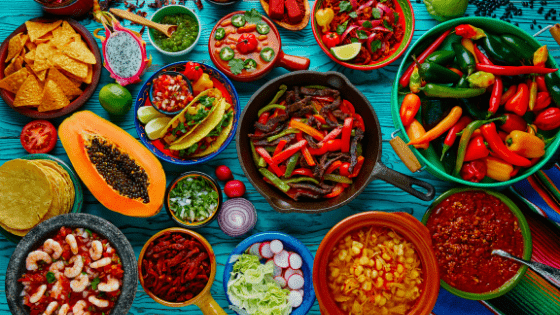18 Fruits That Start With W – With Descriptions
This list of fruits all start with the letter W.
Though not the largest group, the ‘W’ fruits never compromise on taste, nutritional value, and global appeal. Plus, it goes far beyond just watermelon!
Let’s unravel the fascinating flavors of the fruits that all start with the letter W.
List of Fruits That Start With W
Walnut: More than just a nut, the walnut is the fruit of the walnut tree, offering numerous health benefits. Its brain-like structure is rich in Omega-3 fatty acids and antioxidants.
Water Apple (or Rose Apple): Native to Southeast Asia, this fruit has a bell-like shape, a light rose-like flavor, and a crisp texture.
Water Cherry: A tiny, red, and juicy fruit, it closely resembles cherries but is slightly more acidic in flavor.
Watermelon: A favorite summer treat, watermelon is juicy, sweet, and refreshing, known for its red pulp and black seeds, though seedless varieties are also popular.
Wax Apple (or Java Apple): This fruit has a waxy appearance and a juicy crunch. Native to the Philippines and India, it’s refreshing with a mild sweetness.
Wax Jambu: Similar to the wax apple but with a more elongated shape, it offers a juicy texture with a hint of rose flavor.
Waxberry (or Bayberry): Native to China, these are small, reddish fruits with a tart, sweet taste and are often compared to raspberries or cranberries.
West Indian Cherry (or Acerola): Packed with vitamin C, this small, red fruit has a tangy flavor and is often used in drinks and supplements.
White Currant: A variant of the red currant, it’s less tart and has a translucent, pale color. These berries are great for jams and jellies.
White Mulberry: Sweeter than its red or black counterparts, this fruit is often dried and used in various culinary dishes or consumed fresh.
White Sapote: Native to Central America, it has a creamy texture and a custard-like taste, blending hints of vanilla, peach, and citrus.
Whortleberry: This is another name for certain species of blueberries found mainly in Europe. They are small, dark berries, often wild-grown and used in pies and jams.
Wild Lime: Different from the cultivated lime varieties, wild limes are generally smaller, have a more intense tartness, and may have various other flavors mixed in due to the diverse range of wild lime species.
Wild Strawberry: These are smaller than the cultivated strawberries but pack an intense, sweet flavor. They’re often found in forests and open fields.
Winter Melon: Also known as wax gourd or ash gourd, it’s more of a vegetable than a fruit in culinary uses. However, botanically, it’s a fruit. It has a mild taste and is often used in Asian soups and stews.
Wolfberry: Better known as goji berries, these are bright red-orange berries that are native to China. They are known for their health benefits and are commonly dried and used in teas, smoothies, or eaten on their own.
Wood Apple: Native to the Indian subcontinent and Southeast Asia, this fruit has a hard, woody shell. The inside is aromatic and is often mixed with coconut milk and consumed as a beverage or used in desserts.
Wongi Fruit: Native to Australia, this fruit resembles a small orange and has a tangy flavor.
For more lists of fruits, check out:
- Fruits That Start With A
- Fruits That Start With B
- Fruits That Start With C
- Fruits That Start With D
- Fruits That Start With E
- Fruits That Start With F
- Fruits That Start With G
- Fruits That Start With H
- Fruits That Start With I
- Fruits That Start With J
- Fruits That Start With K
- Fruits That Start With L
- Fruits That Start With M
- Fruits That Start With N
- Fruits That Start With O
- Fruits That Start With P
- Fruits That Start With Q
- Fruits That Start With R
- Fruits That Start With S
- Fruits That Start With T
- Fruits That Start With U
- Fruits That Start With V
- Fruits That Start With W
- Fruits That Start With X
- Fruits That Start With Y
- Fruits That Start With Z




